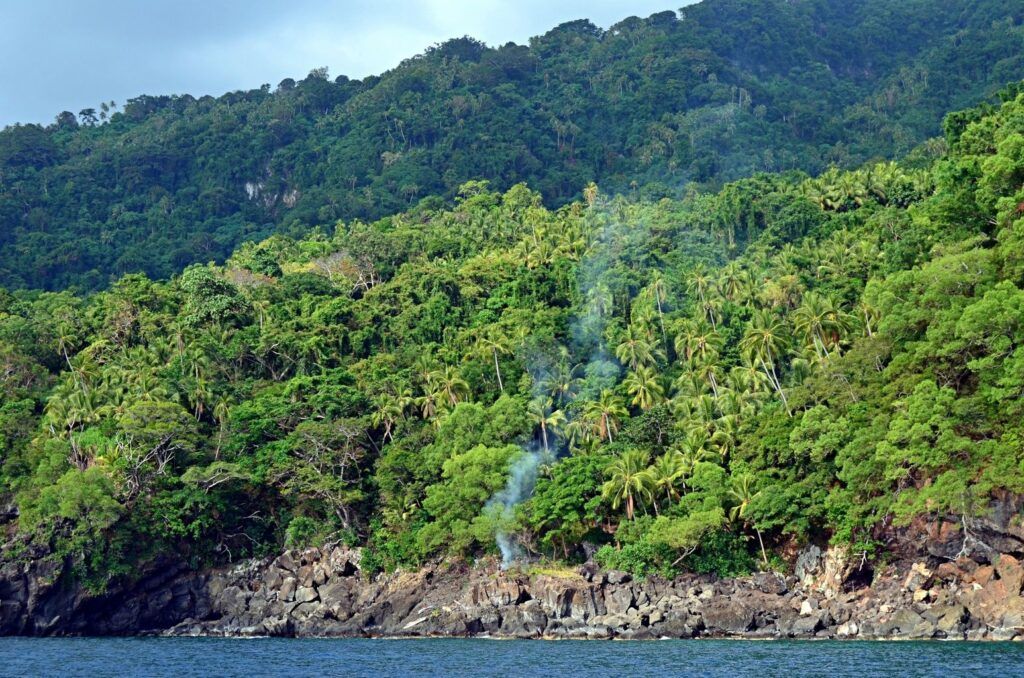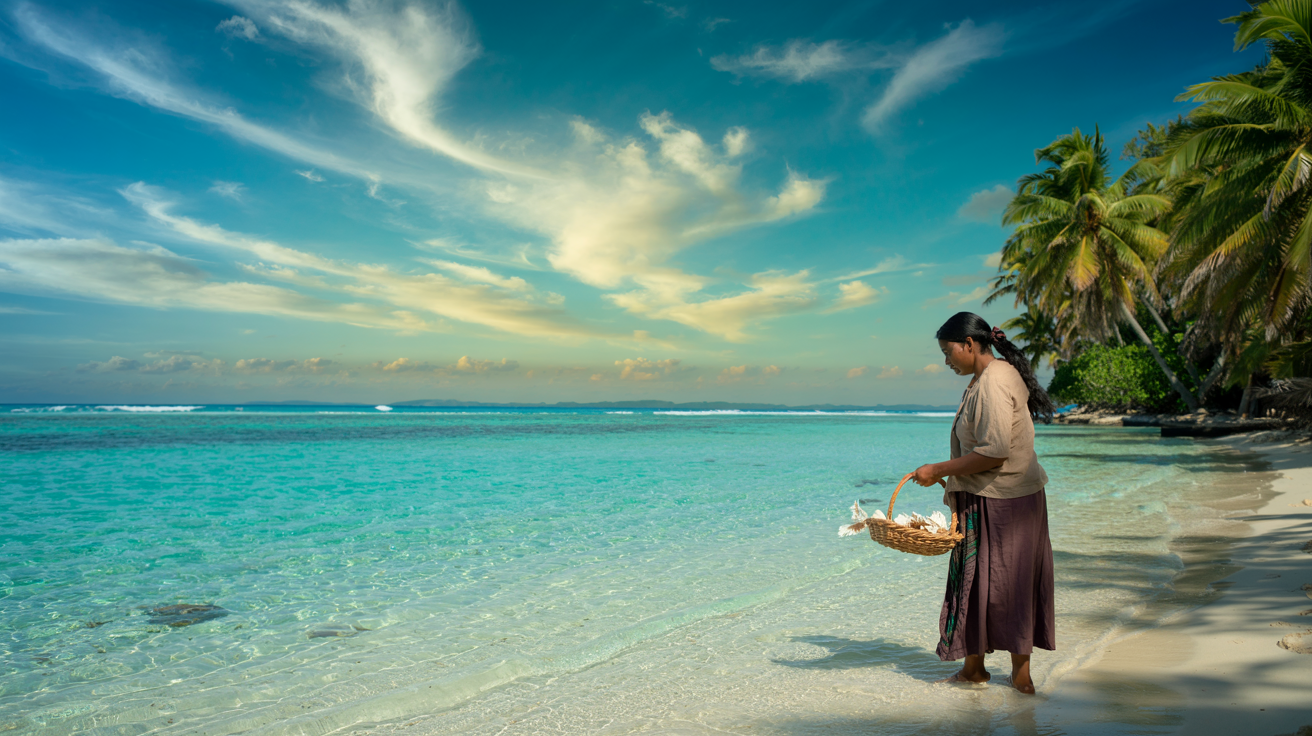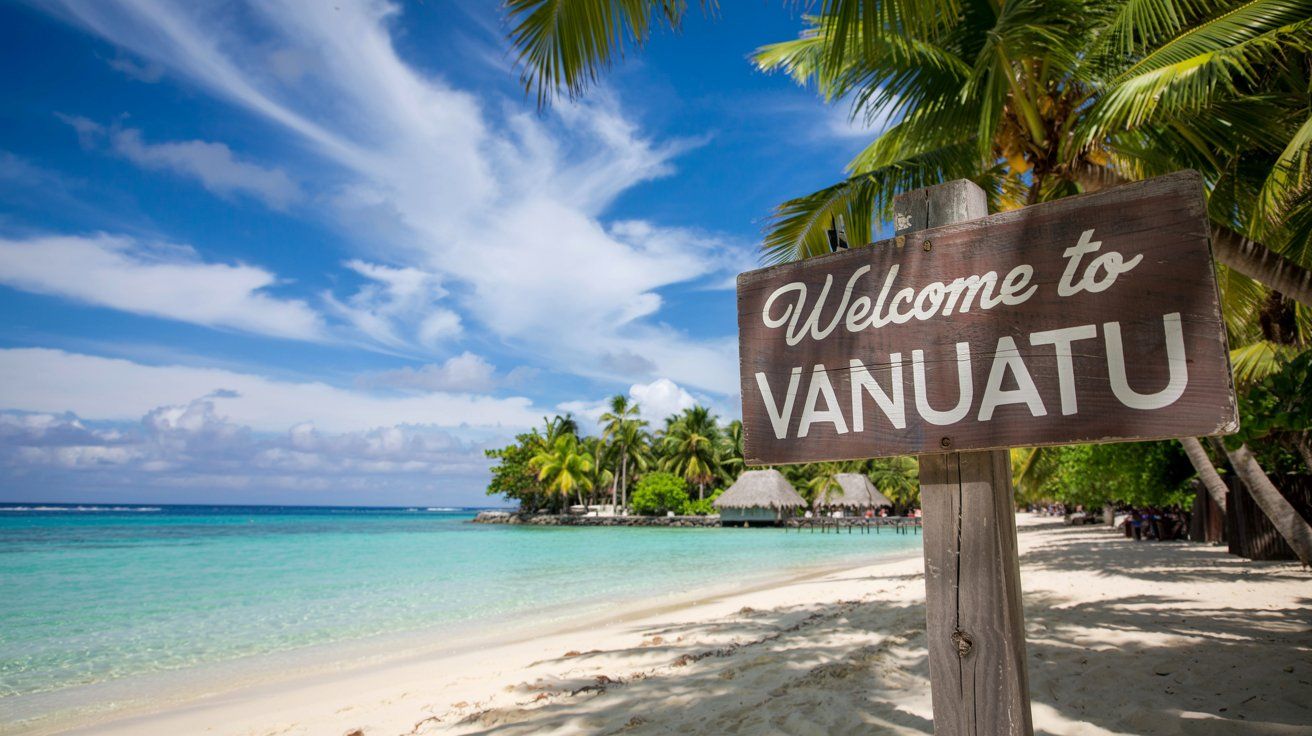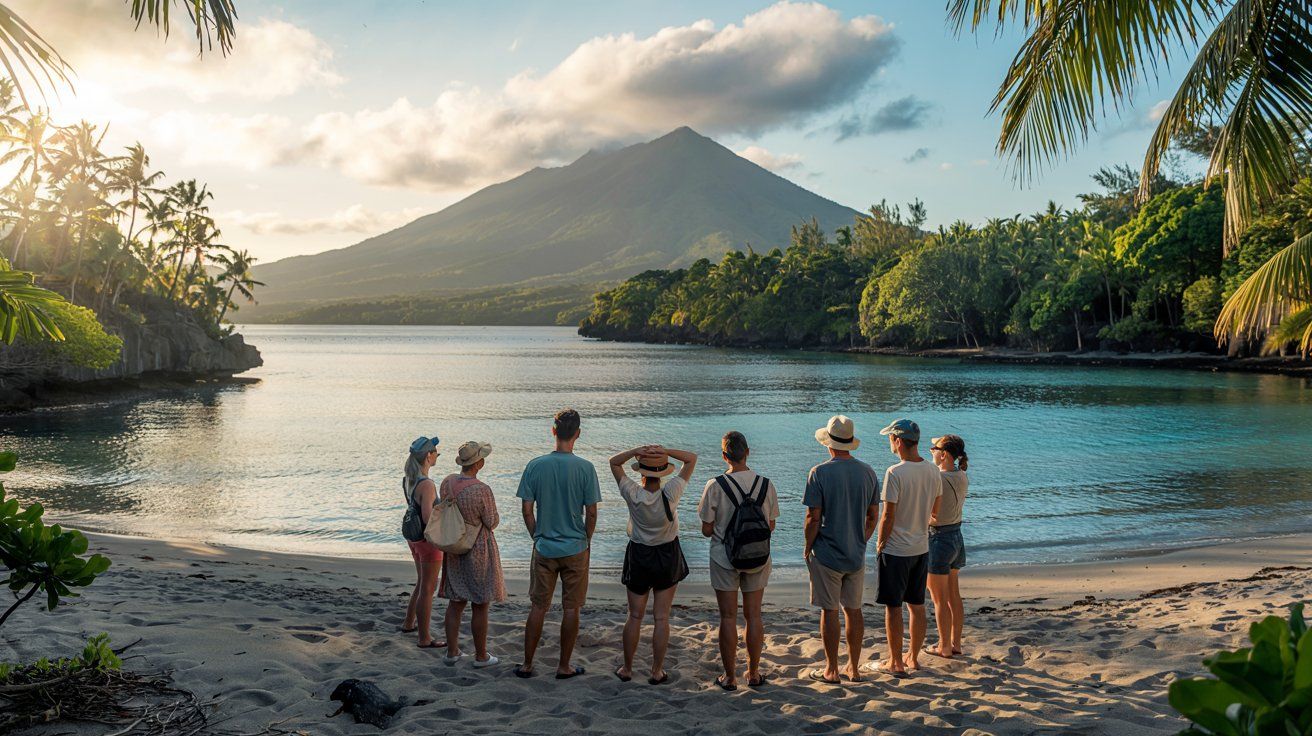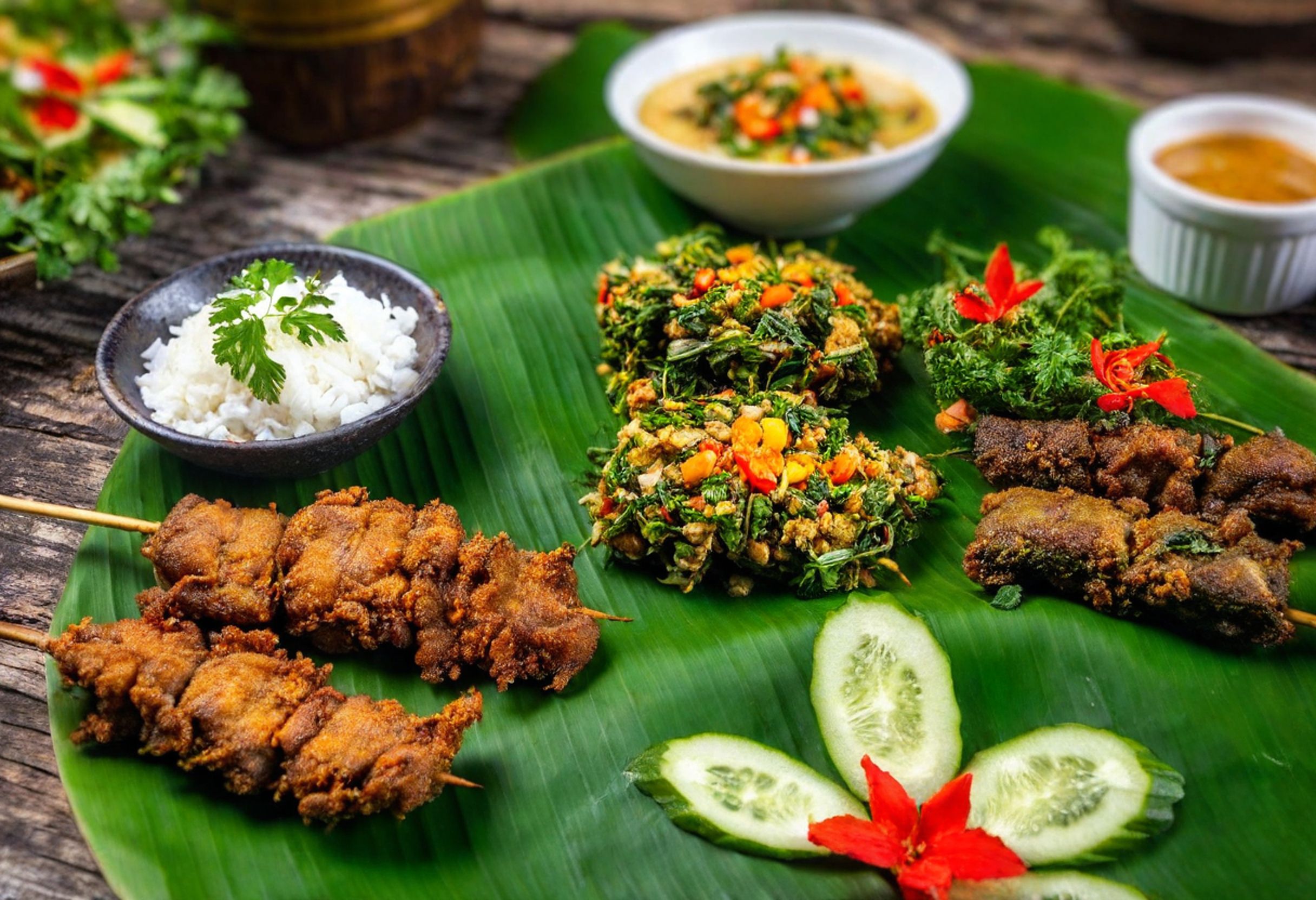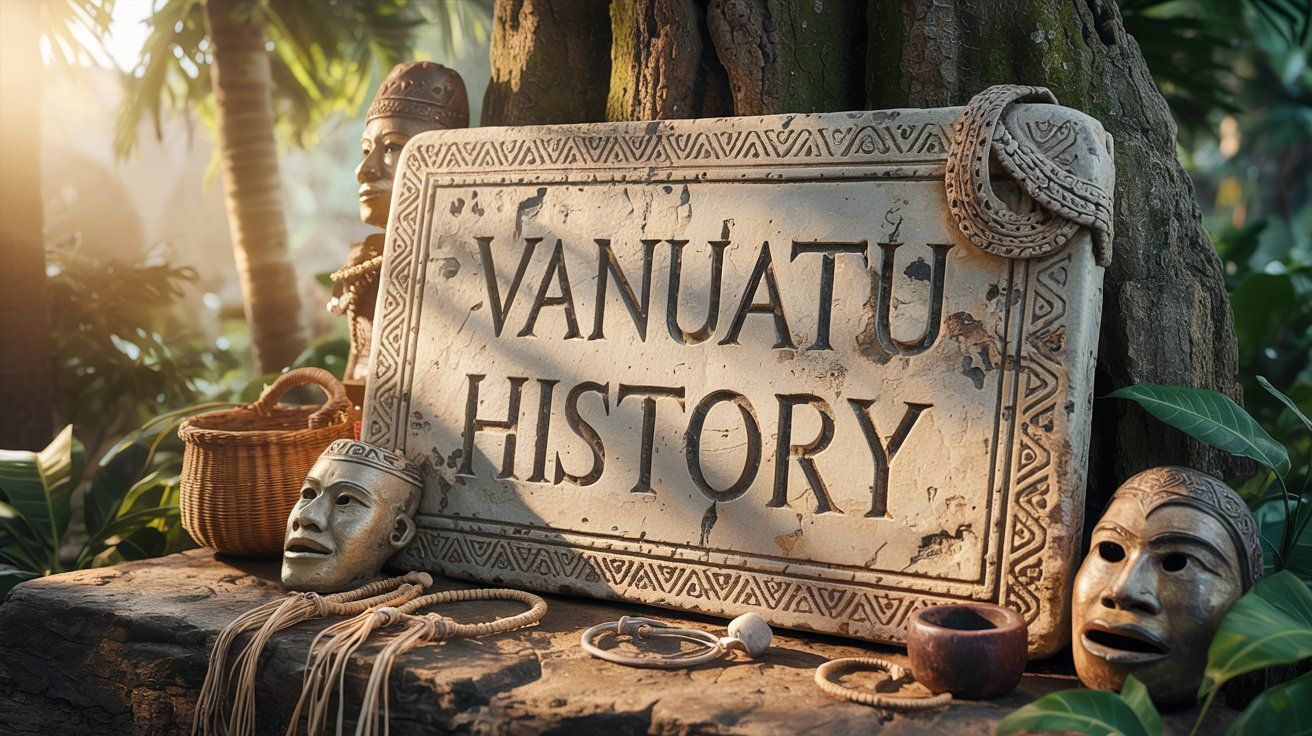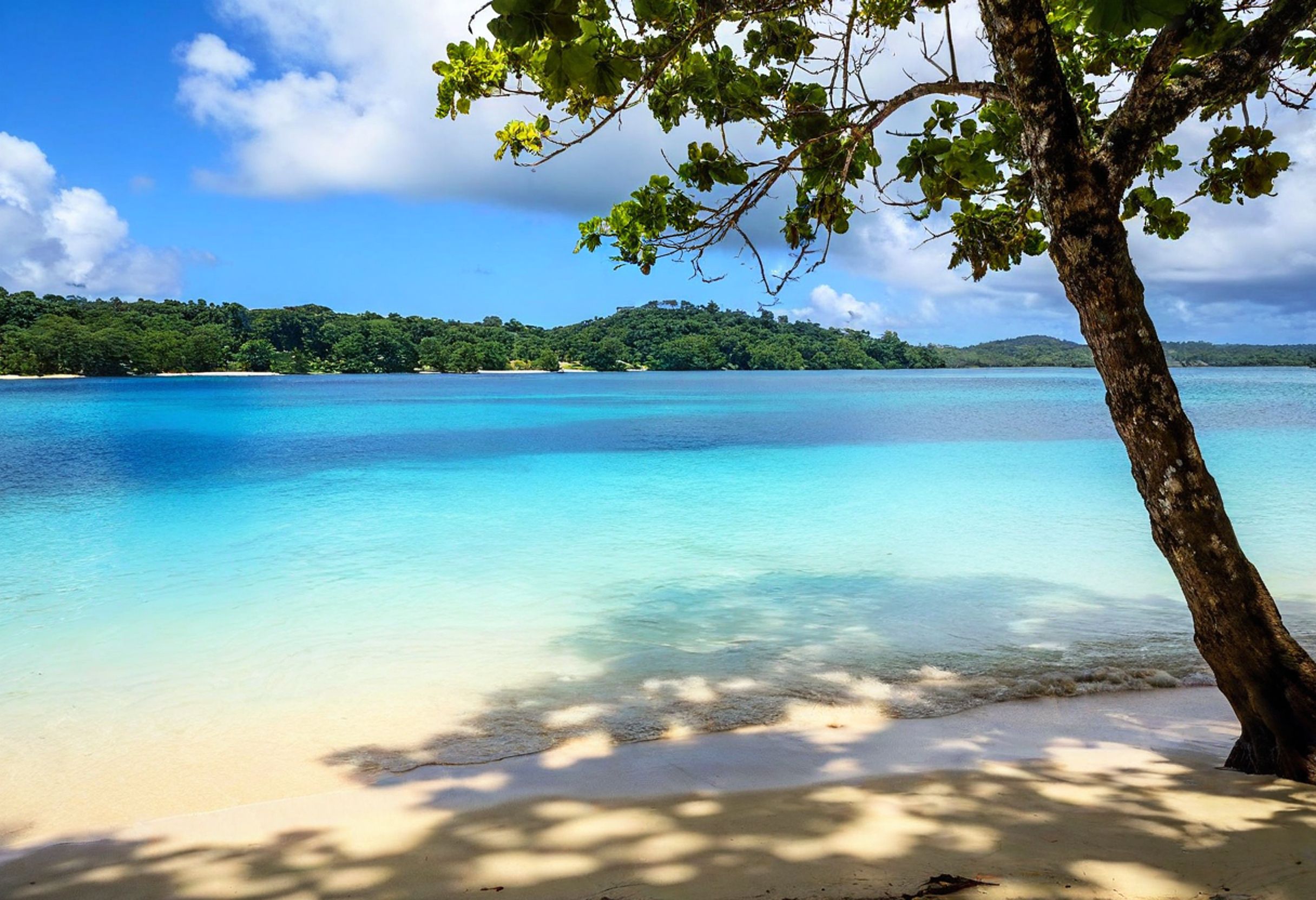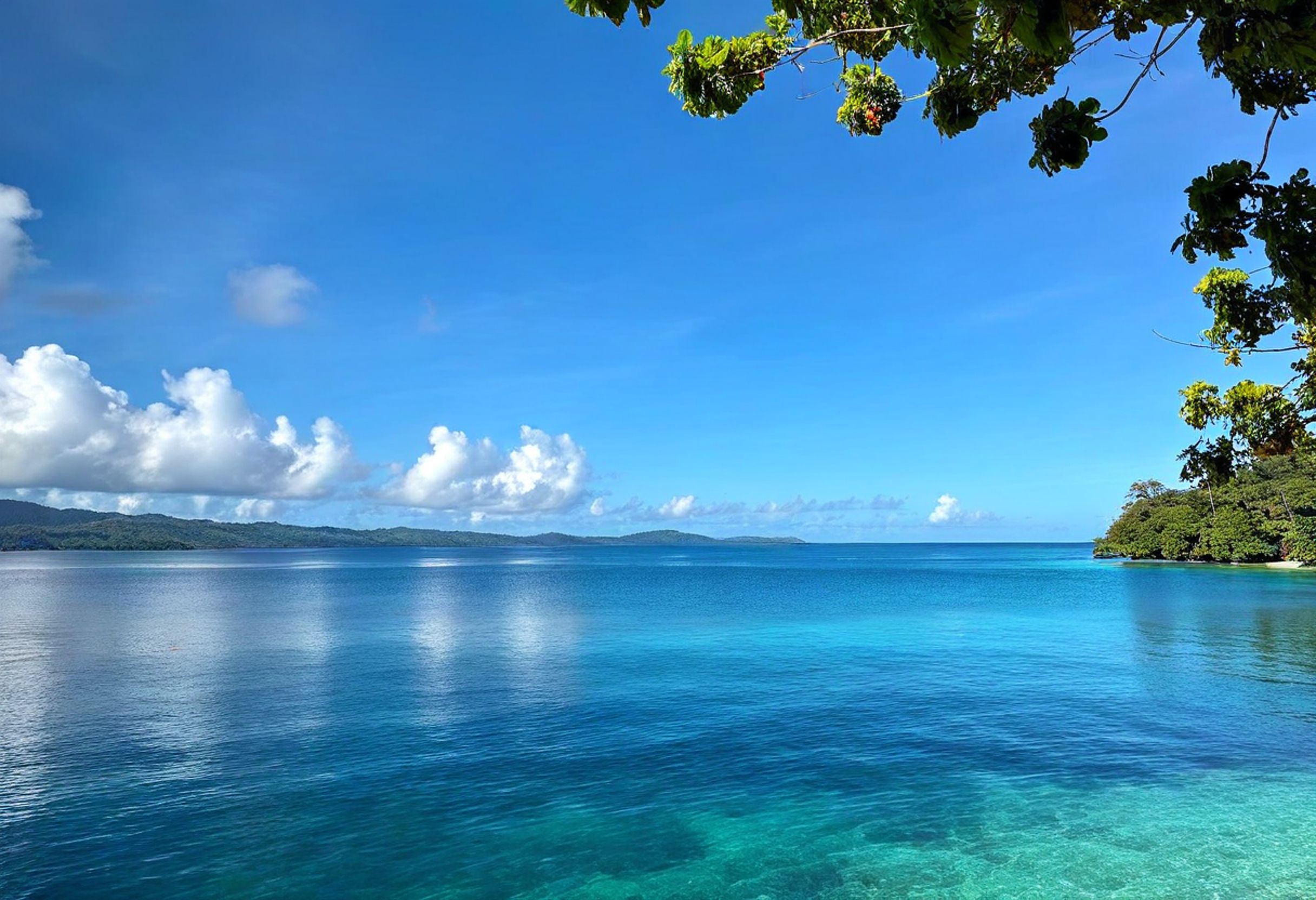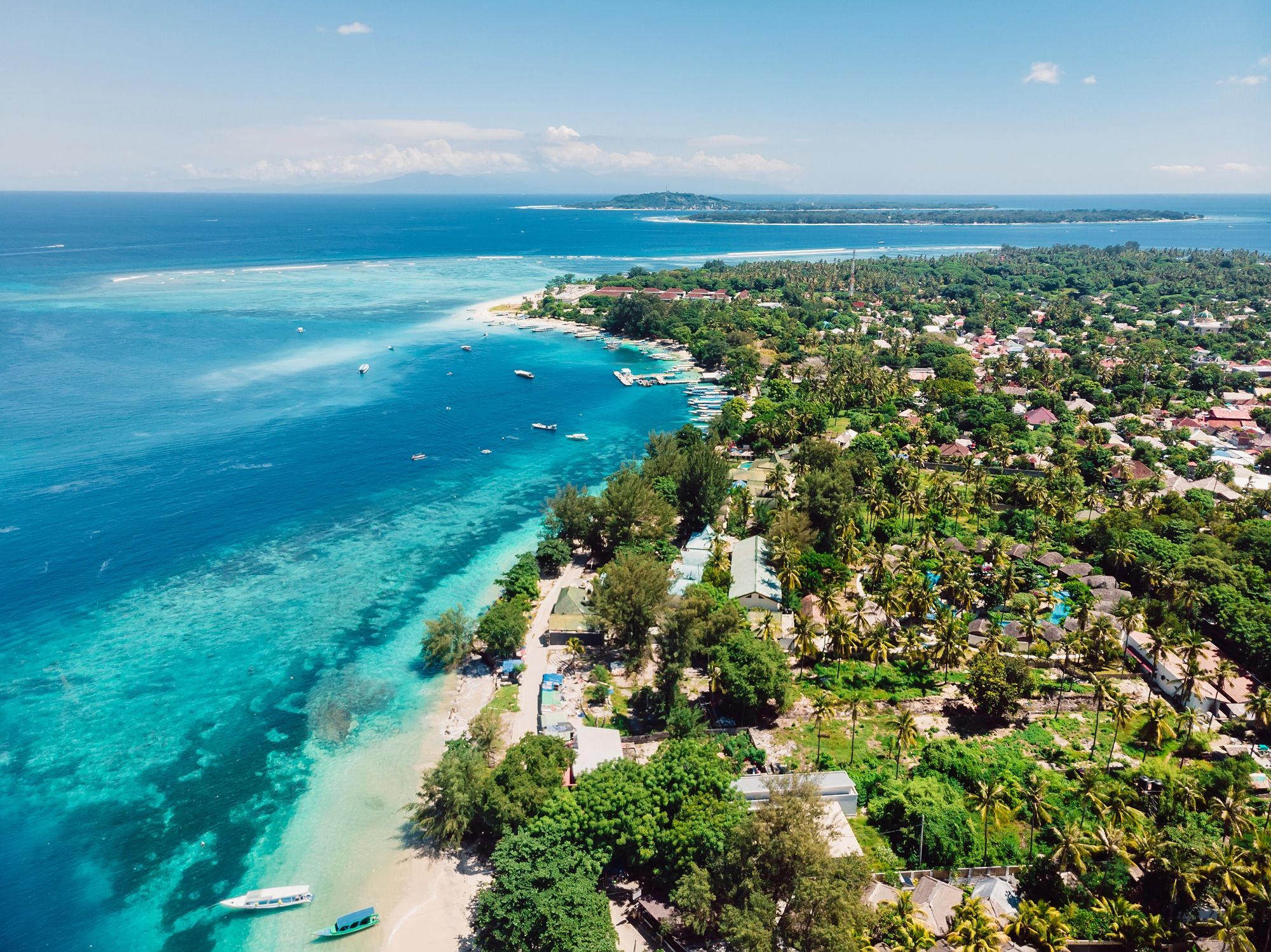Ambae Island rises as Vanuatu’s second tallest island and draws in adventurous travelers who want something different from the usual tourist stops. At its heart, Lake Manaro—one of Vanuatu’s seven active volcanoes—sits high up, around 3,000 feet. Here, you’ll stumble across fantastic hiking trails, quiet southern beaches, and some of the best birdwatching in the country, all on an island most Vanuatu visitors never even think to see.
When you visit Ambae, you can check out natural gems like the Tahimamavi springs or dive into local culture at Lovuintoghi Village. There, you might join in traditional custom dances, try homemade island foods, or watch kava being prepared the old-fashioned way. These real cultural experiences give you a peek into Vanuatu life—something you just won’t get at a resort.
From overwater bungalows to beachfront resorts, find your perfect stay in this island nation of more than 80 islands. Instant booking with best price guarantee!
Browse Accommodations Now
The island mixes wild volcanic scenery with deep-rooted traditions, making it a place for travelers who want a real connection with Vanuatu. Ambae doesn’t have fancy hotels or a polished tourist scene, but its raw beauty and genuine people make it a rewarding trip for anyone ready to go off-grid.
About Ambae Island
Ambae Island gives visitors a rare mix of natural wonder and vibrant culture in Penama Province. This volcanic island boasts dramatic terrain and villages where people still live by strong kastom (traditional customs).
Geography and Landscape
Ambae climbs to 1,496 meters above sea level, making it Vanuatu’s second highest island. It’s actually a huge active shield volcano, with crater lakes perched at the top. Lake Manaro, one of Vanuatu’s seven active volcanoes, sits at about 3,000 feet and usually stays at activity level 2.
Thick tropical forests cover the island, and black sand beaches line the coast. The higher areas often get wrapped in cloud forest, giving the place an almost otherworldly feel.
Back in 2017-2018, Lombenben volcano got restless and forced people to evacuate for a while. Now, travelers can visit again, but it’s smart to check volcano updates before heading out.
Cultural Heritage
Communities on Ambae hold tight to kastom ways that shape their daily lives. Villages keep old ceremonies, dances, and crafts alive, passing them down through the generations.
Most locals speak their own language, along with Bislama (the national creole) and sometimes English. People here are known for being welcoming, and they’re usually happy to share their way of life with visitors.
Traditional cooking still happens in earth ovens called “nakamal,” where food cooks on hot stones. Arts like mat weaving and wood carving show off styles unique to Ambae.
Music brings everyone together at community events, with bamboo bands and custom dances that tell stories from the island’s past.
How to Get to Ambae
Getting to Ambae takes a bit of planning. This volcanic island in Penama Province is reachable by both air and sea, but you’ll need to connect through Vanuatu’s bigger towns.
Flight Connections
Air Vanuatu flies to Longana Airport (LOD) on Ambae’s east side, but flights connect through Espiritu Santo (SON)—not straight from Port Vila. There aren’t many flights each week, so options are limited.
From Port Vila, you’ll need to:
- Fly from Port Vila (VLI) to Espiritu Santo
- Catch a connecting flight from Santo to Longana (LOD)
Small planes serve Ambae, so space for people and bags is tight. Weather—especially during cyclone season—can mess with flight schedules. It’s a good idea to book ahead through Air Vanuatu or a local travel agent.
Ferry Services
Taking the ferry is a cheaper way to go. Boats run regularly between Luganville (Espiritu Santo) and Ambae, and the trip takes about 2-3 hours, depending on the sea.
Here’s what you need to know:
- Price: 2,000 vatu per person to west Ambae
- Price: 2,500 vatu per person to north Ambae
- Leaves from: Luganville, Santo
- Schedule: Depends on the day and season
Sometimes cargo ships also take passengers, but their schedules are unpredictable. These boats are basic, but the experience feels authentic. Always check for the latest sailing info, since weather or other issues can change things fast.
Access from Port Vila and Luganville
If you’re coming from Port Vila, your best bet is to fly to Luganville (Espiritu Santo) first. That’s your main jumping-off point for Ambae.
Once you’re in Luganville, you can:
- Hop on a connecting flight to Longana Airport
- Or grab a ferry from Luganville harbor
The whole trip from Port Vila to Ambae by ferry can take about 25 hours, counting the flight to Santo and any layovers.
A lot of travelers spend a night in Luganville to break up the journey and stock up on supplies—since Ambae has fewer options for food and gear.
Best Time to Visit
When you go to Ambae, your experience will really depend on the season. Weather and local events can make a big difference.
Weather and Climate
Ambae has a tropical climate with two main seasons. The dry season runs from late April to October, and temperatures usually stay between 64°F and 82°F (18°C to 28°C). This is the most comfortable time for hiking and exploring, with less rain and cooler air.
From November to April, the wet season brings more humidity and heavy showers. Some activities might be trickier, but this is when Monaro Lake and the volcano look their best—the whole island turns lush and green.
Trade winds help cool things down during the hottest months. Pack light clothes all year, but toss in a light jacket for evenings, especially if you’re heading up into the hills.
Events and Festivals
Ambae’s festivals give you a front-row seat to Vanuatu’s traditions. The Back to the Islands Festival usually happens in August, when city-dwelling Ni-Vanuatu come home. The whole island buzzes with music, dance, and food.
Independence Day (July 30) is a big deal, with performances, sports, and feasts. Villages often host custom dances around this time.
Yam harvest festivals pop up between March and May, showing off farming traditions and ceremonial gift-giving. Ask around when you arrive—many events follow traditional calendars, so dates can shift.
Top Attractions on Ambae
Ambae’s attractions highlight the island’s wild beauty and deep culture. The volcanic landscapes, traditional villages, and scenery here stick with you long after you leave.
Volcanic Landscapes
Mount Manaro towers over the island and gives Ambae its identity. Its crater lake, Lake Voui, sometimes shifts colors—turquoise one day, reddish-brown the next, depending on the volcano’s mood.
Hiking trails snake up the volcano’s slopes, offering epic views of nearby islands and the Pacific. Local guides know these trails well and can share stories about the volcano’s history.
The rich volcanic soil makes Ambae super fertile. Gardens and plantations blanket the hills, and locals use traditional farming methods to thrive alongside the volcano.
Safety tip: Always check volcano activity reports before planning a hike near Mount Manaro.
Traditional Villages
Village life on Ambae gives you a glimpse of real kastom (customs). Most villages welcome respectful visitors—just remember to ask before taking photos or stepping into certain areas.
In North Ambae, you might catch traditional dances during special ceremonies. The island’s kastom dances stand out for their colorful costumes and face paint.
Local artisans weave baskets, mats, and carve wood—each piece telling a story about island life. Some villages even offer weaving lessons if you’re curious.
Nakamals (meeting houses) sit at the heart of many villages, where people make big decisions and gather for social events.
Natural Wonders
Ambae’s coastline serves up black sand beaches, the result of ancient eruptions. The dark sand against bright blue water makes for some pretty striking photos.
Elegant resorts, tropical villas, and vacation rentals with immediate confirmation. Experience a culture dating back to 1,300 BC in this breathtaking archipelago!
See Available Properties
Hidden waterfalls break up the island’s interior. Evergreen Cascades is a favorite, with guided walks through rainforest leading to cool pools—perfect after a sweaty hike.
Coral reefs hug much of the shore, inviting snorkelers to spot colorful fish, sea turtles, and lively coral gardens.
On Ambae’s east side, you’ll find lookouts with wide-open views of neighboring islands. Catching sunrise here? Absolutely worth the early wake-up.
Local Culture and Traditions
Ambae’s culture is packed with old customs and traditions you won’t find anywhere else. The island’s way of life gives visitors a real taste of Vanuatu’s heart.
Kastom and Social Customs
Kastom (traditional culture) shapes everything on Ambae—from big ceremonies to daily routines. The red mat carries meaning for every stage of life. Newborns are swaddled in them, and the mats show up at all the major milestones.
Social structure here depends on family lines. Some villages pass inheritance through mothers (matrilineal), others through fathers (patrilineal).
When you visit, respect for local customs matters. Always ask before snapping photos of people or ceremonies. During cultural events, just follow the locals’ lead on what’s appropriate.
Languages Spoken
For a small island, Ambae has a surprising number of languages. Different communities speak their own, and it can change from one area to the next.
Bislama is the go-to language that connects everyone across Ambae and Vanuatu. It’s a creole with English roots, so if you know a bit of English, you’ll probably pick up the basics fast.
Many people also speak English, especially those in tourism or who’ve gone to school. In more remote spots, though, you’ll hear mostly local tongues.
Traditional languages hold a lot of cultural knowledge. Learning a few greetings in Bislama goes a long way and usually gets a smile from locals.
Activities and Experiences
Ambae packs in a variety of adventures, from wild landscapes to underwater fun. Whether you’re a hiker, swimmer, or just curious about local life, you’ll find something that clicks.
Hiking Adventures
Hiking on Ambae brings you up close to some of Vanuatu’s best scenery. Manaro volcano offers challenging trails and sweeping views of crater lakes. Local guides can point out native plants and explain their traditional uses as you trek through the rainforest.
If you prefer something easier, coastal walks pass by black sand beaches and sleepy villages. Waterfalls hide on the eastern side, tucked away in thick jungle—great for a cool dip mid-hike.
Wear good shoes and pack plenty of water. The heat makes early mornings the best time to hit the trails. Some paths cross village land, so arranging a guide is always a smart move.
Snorkeling and Swimming
Ambae’s clear waters and healthy reefs make for top-notch snorkeling. The west coast has sheltered coves where you can see 20 meters or more underwater.
You might find gear for rent in bigger villages, but bringing your own usually works out better. High tide is the sweet spot for snorkeling since more of the reef is covered.
Natural pools, formed by old lava flows, offer safe swimming when the sea gets rough.
Always respect the reef—don’t touch coral or bother sea life. Some spots have strong currents at certain times, so check with locals before diving in.
Fishing Trips
Fishing is a big part of life on Ambae, both for tradition and fun. Local fishermen often take visitors out to try both old-school and modern fishing styles. If you’re after bigger catches like marlin, tuna, or mahi-mahi, deep sea trips are an option.
Shore fishing works well for beginners. Guides can show you the ropes and the best places to cast a line. Many guesthouses can set up fishing excursions for half or full days.
You’ll probably end up sharing your catch at a community meal—a great way to taste local flavors and swap stories.
It’s best to book fishing trips a day or two ahead. Most guides provide all the gear you’ll need. Early mornings are usually best for reef fishing around the island.
Where to Stay on Ambae
Ambae Island doesn’t have a huge range of accommodation, but what’s here feels real and welcoming. If you’re looking to skip big resorts and see genuine Vanuatu hospitality, you’re in the right spot. Most places are run by local families who genuinely care about your stay.
Guesthouses and Lodges
Hotel Santo is where a lot of folks stop before heading over to Ambae. Once you’re on the island, you’ll notice family-run guesthouses tucked away in coastal villages. These places are simple—think shared bathrooms and home-cooked meals with whatever’s fresh from the garden or sea.
You’ll usually pay between 2,000 and 4,000 vatu a night (about $18-36 USD). It’s a smart move to book ahead since options are few and far between.
If you want to get even closer to local life, try a village stay. You’ll live with a family in a traditional house—just ask your guesthouse host or a local guide to set it up.
When you’re booking, definitely ask about:
- Whether there’s electricity (some places only run generators for a few hours)
- What the bathrooms are like
- If meals come with your stay
Eco-Friendly Accommodation
Ambae’s wild landscape has inspired a handful of eco-focused accommodation spots that blend right into the forest and volcanic scenery.
Eco-lodges here are usually built with local materials and old-school techniques. They try to keep things green—solar power, rainwater tanks, compost toilets, that sort of thing.
Some of these lodges have killer views of Lake Manaro, one of the island’s volcanic crater lakes. You might get a guided walk or a cultural lesson included, which makes things more interesting.
For a real adventure, you can stay with villagers who still farm and fish the traditional way. They’ll usually be happy to show you how they live and share what they know about the land.
Most eco-lodges don’t use online booking, so you’ll need to email or call ahead. It’s a bit old-fashioned but part of the experience.
Getting Around Ambae
Getting around Ambae takes a bit of planning—don’t expect regular buses or fancy taxis. The main road circles the island, with a few rough tracks heading inland.
Local Transport Options
Toyota trucks are everywhere on Ambae and double as taxis or public transport. They run on set routes but not on any fixed schedule, so you might wait a bit. Rides typically cost 500-1000 vatu for short hops.
Walking makes sense between nearby villages, especially along the coast. You’ll see plenty of locals doing the same, and honestly, it’s a great way to soak up the scenery.
You might find motorcycle rentals in bigger villages, but it’s hit or miss. If you do, expect to pay around 3,000-5,000 vatu per day.
Roads can be rough, especially inland. The ones along the coast are better, but when it rains (November to April), some stretches turn into a real challenge.
Easy booking across stunning accommodations from luxury resorts to eco-friendly retreats. This Y-shaped archipelago offers pristine beaches, active volcanoes, and world-class diving!
Secure Your South Pacific Getaway
Guided Tours
Local guides offer personalized tours for about 2,000-4,000 vatu a day, depending on what you want to see. Most guides speak Bislama and often some English, so you get more out of your visit.
Village tours are a favorite—they’ll take you to see daily life, maybe join a cooking lesson, weaving demo, or a dance.
If you’re keen to hike up Mount Manaro, you’ll need a guide who knows the volcano. These trips cost more (usually 5,000+ vatu) because they require more planning and know-how.
Most of the time, you can just arrange tours on the spot through your guesthouse or by chatting with people in the main villages.
Essential Travel Tips
A bit of local know-how goes a long way when you’re planning a trip to Ambae. Here’s what you’ll want to keep in mind.
Vatu Currency and Money Exchange
You’ll need the Vanuatu vatu (VT) on Ambae—that’s the local currency. Banks are scarce, so swap your cash in Port Vila before you fly over. The ANZ Bank in Port Vila is your best bet for fair exchange rates.
Most shops and markets on Ambae only take cash. Cards are basically useless unless you’re at a big hotel. Bring plenty of small notes (100, 200, 500 VT) since a lot of vendors can’t break big bills.
Things are cheaper here than in Port Vila. If you’re budgeting, plan for 5,000-7,000 VT per day to cover basics like:
- Local meals: 500-1,000 VT
- Bottled water: 200 VT
- Short taxi rides: 500 VT
- Simple accommodation: 3,000-5,000 VT
Tipping Etiquette
Tipping isn’t really a thing in Vanuatu, even on Ambae. Most Ni-Vanuatu don’t expect tips for anything—restaurants, guides, drivers, hotel staff, you name it.
Hotels and restaurants usually include a service charge, so check your bill before thinking about extra.
If you want to show your appreciation, people here value small gifts—t-shirts, fishing gear, school supplies—over cash. If you do tip (maybe 5-10% for something exceptional), it’ll be appreciated, but it’s not necessary. A simple “tangkyu tumas” (thank you in Bislama) means a lot.
Dining and Local Cuisine
Eating on Ambae is all about local flavors and home-style cooking. You won’t find fancy restaurants, but you’ll get a true taste of Vanuatu.
Traditional Dishes
Lap lap is the dish everyone talks about—it’s a kind of pudding made from grated yam, taro, or manioc, mixed with coconut cream, wrapped in banana leaves, and baked underground. It’s hearty and has a bit of smokiness.
Root crops are everywhere—taro, yam, manioc—usually paired with fresh seafood caught that day.
Coconut shows up in almost everything. Locals use the milk to thicken stews, the flesh for sweetness, and the water as a drink.
Tropical fruit grows all over the place. Papaya, pineapple, mango, bananas—you’ll get them straight from the tree, often as dessert.
Where to Eat
Small shops scattered around Ambae sell basic groceries. If your place has a kitchen, you can pick up what you need for simple meals.
The fruit and veggie market in Saratamata is open on weekdays. If you want the best pick, go early—local farmers bring in whatever’s fresh.
Sometimes you’ll spot family-run food stalls near villages or gathering spots. These are super casual, serving whatever’s available that day. Don’t expect a menu—just ask what’s cooking.
If you’re up for it, ask your guesthouse to organize a traditional meal. Many hosts love sharing their favorite recipes and will happily put together a feast for their guests.
Health and Safety on Ambae
Ambae’s a beautiful place, but you need to be aware of natural hazards and the fact that medical help is pretty limited. A bit of prep makes all the difference.
Travel Safety Guidelines
Ambae sits in an active earthquake and volcano zone. The volcano (locals call it Aoba) erupted as recently as 2023, sending out lava and ash. Always check the latest volcanic alerts before you go.
Stay updated on seismic activity by listening to local authorities. Earthquakes can trigger tsunamis, so if you’re near the coast, make sure you know the evacuation routes.
Stick to bottled or sealed drinks—homemade alcohol isn’t safe and can be dangerous.
If you’re heading somewhere remote, let someone know your plans. In rainy season, some roads get washed out and travel becomes tricky.
Keep emergency numbers handy, including your embassy and local services.
Medical Facilities
Medical care on Ambae is very basic. If you get really sick or injured, you’ll probably need to get to Port Vila or even Australia. Travel insurance with medical evacuation is a must.
See your doctor 4-6 weeks before your trip for any needed vaccines. Malaria and hepatitis A are around on some islands, so take precautions.
Pack a solid first aid kit:
- Your prescription meds (in the original packaging)
- Anti-diarrheal tablets
- Painkillers
- Bandages and antiseptic
- Insect repellent (at least 30% DEET)
Only drink bottled or boiled water. After volcanic ash falls, clean water can be hard to find in some villages.
Exploring Nearby Outer Islands
Ambae has plenty to offer, but the surrounding islands in Vanuatu are just as tempting. Each one brings something unique—different cultures, wild landscapes, and new adventures.
Espiritu Santo Highlights
Espiritu Santo, the biggest island in Vanuatu, sits northwest of Ambae and is perfect for a day trip or a longer stay. Luganville is the main town and your starting point for exploring.
Million Dollar Point is a diver’s dream—imagine swimming among sunken WWII equipment. If you’re certified, the SS President Coolidge wreck is another legendary dive site.
Don’t miss the blue holes. These pools are an unreal shade of turquoise and perfect for a swim. Matevulu Blue Hole is one of the easiest to reach.
Local markets in Luganville are lively and full of fresh produce and crafts. The people are friendly and love sharing their culture.
Malakula Adventures
Malakula is Vanuatu’s second-largest island and feels a world away from the usual tourist trail. It’s rugged, less visited, and a great place to see how Ni-Vanuatu traditions have survived for generations.
You can join cultural tours to the Small Nambas and Big Nambas tribal areas. These communities keep their ancient customs alive, and their traditional dress is something you won’t forget.
There’s no shortage of trekking—rainforests, volcanoes, and remote villages that rarely see outsiders. Local guides know the best paths.
Malakula is also famous for mask-making. Watching artisans at work is fascinating, and you can buy a mask straight from the maker.
Staying in a village guesthouse gives you a much deeper experience than a regular hotel. It’s basic, but you’ll get a real sense of local life.
Pentecost Culture
Pentecost Island sits east of Ambae and is best known for its land diving ritual. It’s wild—men leap from tall wooden towers with only vines tied to their ankles, all as part of the yam harvest festival. This is where bungee jumping got its start, believe it or not.
The Naghol ceremony happens between April and June. It’s breathtaking and draws visitors from around the world.
Even outside land diving season, Pentecost is worth visiting. Village tours let you see daily life, hear string band music, and watch custom dances.
You’ll find local markets with crafts and food—try lap-lap cooked in earth ovens for a real taste of Vanuatu.
Getting to Pentecost takes some planning since flights from Port Vila only run a few times a week.
Visiting Champagne Beach
Champagne Beach on Espiritu Santo easily stands out as one of the South Pacific’s most beautiful beaches. Locals named it after the tiny bubbles that fizz up through the sand at low tide—it really does look like champagne, if you squint.
Powdery white sand meets insanely clear water, and honestly, it looks almost too perfect to be real. The beach curves gently, and the calm water makes it great for swimming or just floating around. If you like snorkeling, you’ll find coral reefs close to shore, packed with tropical fish darting everywhere.
You’ll probably spot a few local vendors with small stalls—fresh coconuts, tropical fruit, and handmade crafts are the usual fare. Buying a snack or souvenir is a nice way to support the community and, let’s be honest, it just feels right to sip a coconut on this beach.
Find available hotels and vacation homes instantly. No fees, best rates guaranteed!
Check Availability Now
Most people come on day trips from Luganville, which sits about an hour’s drive away. If you can, get there early. It’s quieter before any cruise ship crowds show up, and that makes a big difference.
Don’t forget to bring some cash for the small entrance fee. The local community looks after this place, and the fee goes right back into keeping Champagne Beach as stunning as it is.

